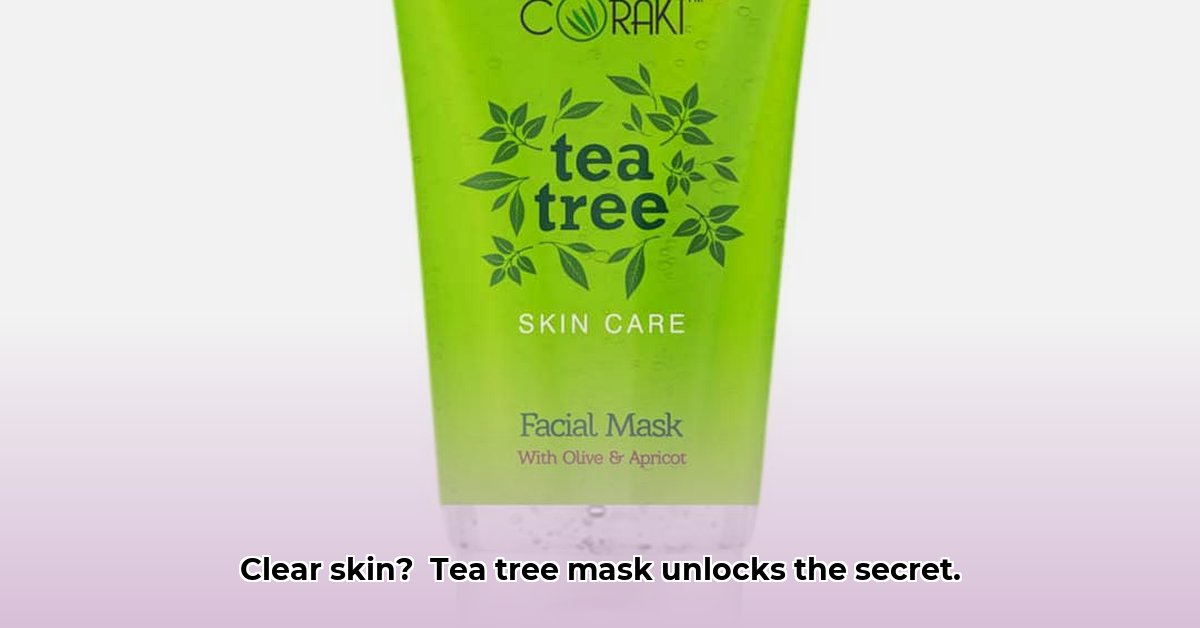
Understanding the Power of Tea Tree Oil for Skin
Tea tree oil, extracted from the Melaleuca alternifolia plant, is a natural remedy gaining popularity for its potential skincare benefits. Its remarkable properties stem from its potent antibacterial and anti-inflammatory components, making it a compelling option for various skin concerns. This guide explores the advantages of incorporating tea tree masks into your skincare routine, offering both information and practical instructions for optimal results. We'll dive into the science behind its effectiveness and provide a step-by-step guide to using tea tree masks safely and effectively.
Benefits of Tea Tree Masks for Your Skin
Tea tree oil's multifaceted properties offer several potential advantages for your skin:
Fighting Acne and Blemishes
Tea tree oil's antibacterial nature directly targets Cutibacterium acnes (formerly Propionibacterium acnes), a bacterium known to contribute to acne breakouts. By reducing bacterial populations, tea tree masks may help clear existing blemishes and prevent new ones from forming. A significant decrease in acne severity has been observed in several studies, although more research is needed to solidify its efficacy for all acne types.
Soothing Irritation and Redness
The anti-inflammatory components in tea tree oil can calm irritated skin conditions. Redness and inflammation associated with acne, eczema, or other skin irritations may be lessened with the application of a tea tree mask. This soothing effect can improve overall skin comfort and reduce visible signs of inflammation.
Balancing Oily Skin
Tea tree oil exhibits astringent properties, which help regulate sebum (oil) production. This balanced approach can reduce excessive shine and improve the overall appearance of oily skin without causing excessive dryness. Improved skin texture is a common reported benefit.
How to Use a Tea Tree Mask Effectively: A Step-by-Step Guide
Follow these steps for optimal results:
- Cleanse: Begin with a gentle cleanser to remove dirt, makeup, and excess oil, ensuring effective mask penetration.
- Apply: Apply a thin, even layer of the tea tree mask to your face, avoiding the delicate eye area.
- Wait: Let the mask sit for 10-15 minutes, allowing the active ingredients to work their magic. Refer to product instructions for specific timing.
- Rinse: Gently rinse the mask off using lukewarm water. Avoid harsh scrubbing to prevent skin irritation.
- Moisturize: Follow up with a light moisturizer to hydrate and protect your skin.
Important Considerations and Precautions
While tea tree oil offers many potential benefits, precautions are necessary:
- Patch Test: Always perform a patch test on a small area of skin (e.g., behind the ear) before applying any new product to your entire face to check for allergic reactions.
- Dilution: For sensitive skin, consider diluting the tea tree oil with a carrier oil (like jojoba or almond oil) to minimize potential irritation.
- Discontinue Use: If you experience any irritation (redness, burning, itching), discontinue use immediately and rinse thoroughly.
Choosing the Right Tea Tree Mask
The marketplace offers a variety of tea tree masks. Consider your specific skin type and concerns when selecting a product. Read reviews and compare formulations to find a mask that best suits your needs.
Weighing the Pros and Cons: Is a Tea Tree Mask Right For You?
| Pros | Cons |
|---|---|
| Effective against acne and blemishes | Potential for allergic reactions |
| Soothes inflammation and redness | May cause dryness in some individuals |
| Balances oily skin | Requires a patch test |
| Relatively affordable and widely available | Effectiveness depends on product quality and consistency |
| May improve overall skin texture and clarity | Not a miracle cure; results vary by individual |
Remember, consistency is key. Regular use, combined with a healthy lifestyle (proper hydration, balanced diet, sufficient sleep), can maximize benefits. Listen to your skin and adjust your routine as needed. Every individual's skin is unique.